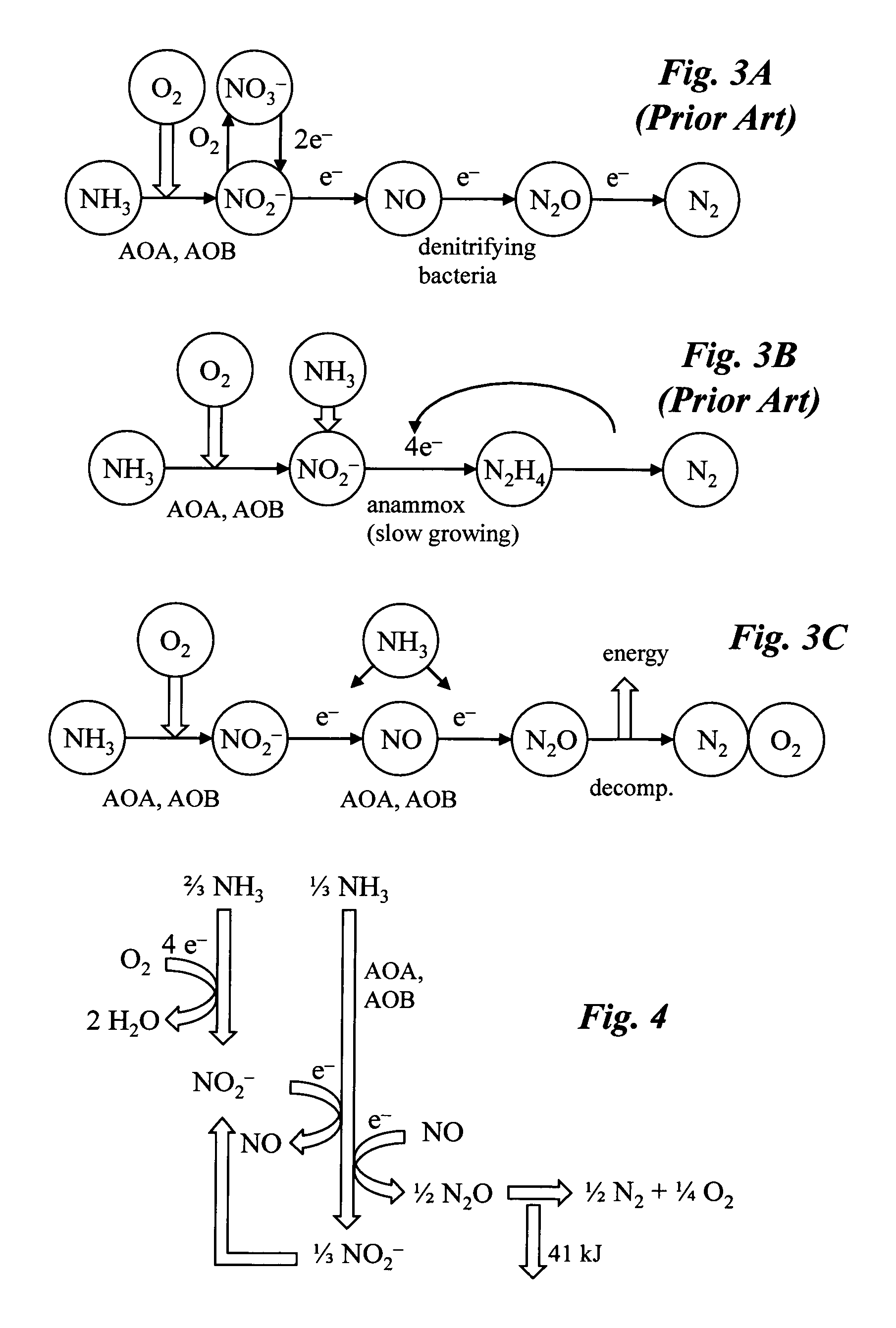Microbial production of nitrous oxide coupled with chemical reaction of gaseous nitrous oxide
a technology of nitrous oxide and chemical reaction, which is applied in the nature of treatment water, combustion using lump and pulverizing fuel, combustion types, etc., can solve the problems of not trying other forms of reactive nitrogen also pose a great threat to the environment, and researchers have never attempted to maximize n2o production rate. , to achieve the effect of reducing n2o production
- Summary
- Abstract
- Description
- Claims
- Application Information
AI Technical Summary
Benefits of technology
Problems solved by technology
Method used
Image
Examples
Embodiment Construction
General Overview / Flowchart
[0041]An overview of a preferred embodiment of the invention is shown in the flowchart of FIG. 1. In step 100 nitrogen compounds from waste are processed in a bioreactor system to produce nitrous oxide. Optionally, in step 102 nitrous oxide product dissolved in effluent from the bioreactor is separated to increase the amount of gaseous phase nitrous oxide product. In step 104 the nitrous oxide is chemically reacted in gaseous phase using a hardware device coupled to the bioreactor system. In one configuration, the gaseous nitrous oxide is chemically decomposed to form oxygen and nitrogen gas. In this case, the oxygen may be optionally fed back to the bioreactor in step 106. Alternatively, the gaseous nitrous oxide may be an oxidant in a combustion reaction, in which case no oxygen is fed back.
[0042]FIG. 2 is a schematic diagram of a coupled bioreactor-catalytic converter system according to one embodiment of the invention. The system converts waste nitrogen...
PUM
| Property | Measurement | Unit |
|---|---|---|
| time | aaaaa | aaaaa |
| concentrations | aaaaa | aaaaa |
| solubility | aaaaa | aaaaa |
Abstract
Description
Claims
Application Information
 Login to View More
Login to View More - R&D
- Intellectual Property
- Life Sciences
- Materials
- Tech Scout
- Unparalleled Data Quality
- Higher Quality Content
- 60% Fewer Hallucinations
Browse by: Latest US Patents, China's latest patents, Technical Efficacy Thesaurus, Application Domain, Technology Topic, Popular Technical Reports.
© 2025 PatSnap. All rights reserved.Legal|Privacy policy|Modern Slavery Act Transparency Statement|Sitemap|About US| Contact US: help@patsnap.com



